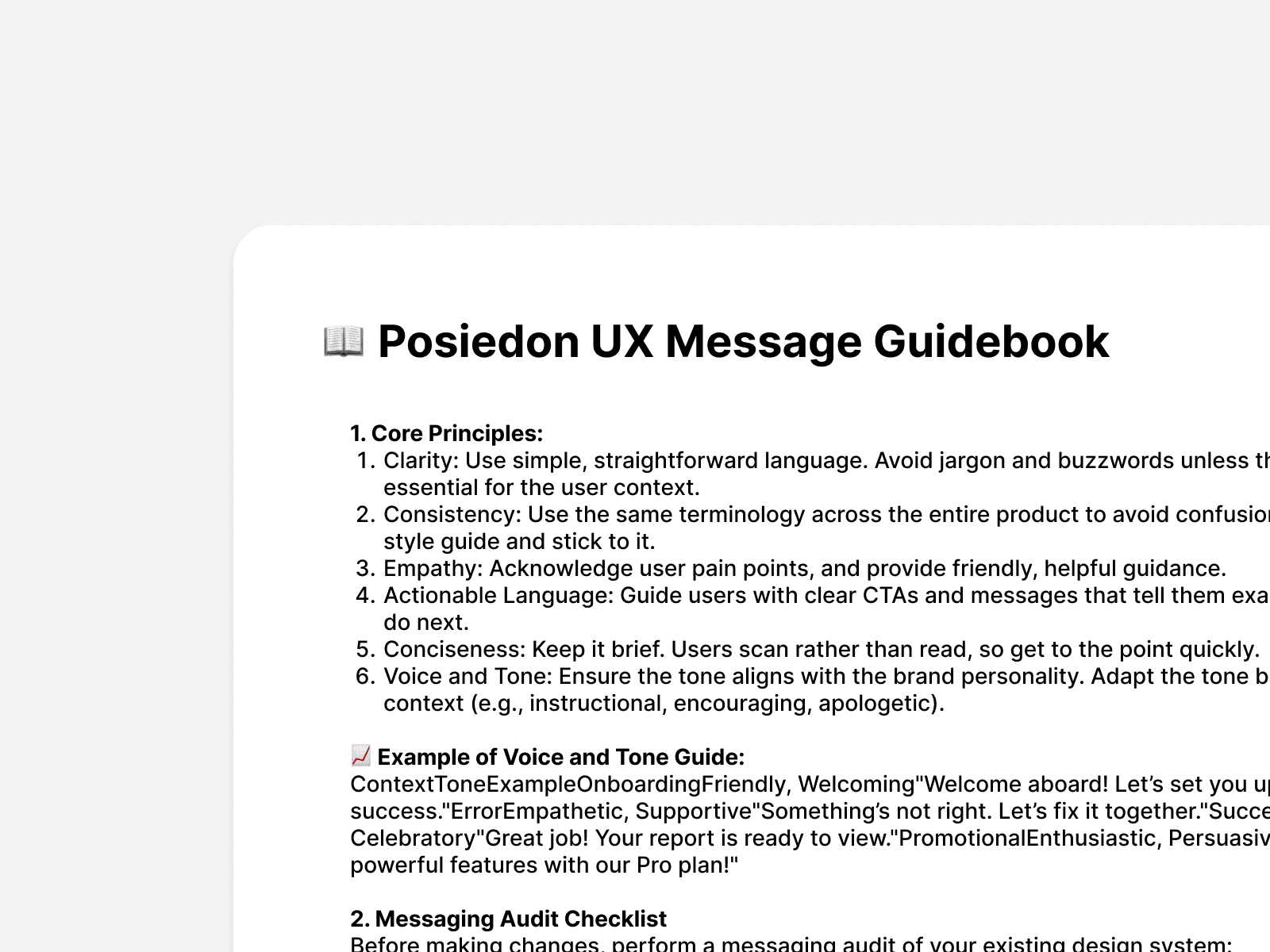Emly AI Chatbot Redesign
Enhancing Conversational AI: A Case Study on Emly AI Chatbot Redesign
The Emly AI Chatbot project was aimed at creating a conversational AI tool to enhance customer support for B2B SaaS companies. Initially deployed as a basic AI tool, Emly faced critical issues in query comprehension, multi-turn conversation handling, and error recovery. This case study documents my design process from problem identification to solution implementation, showcasing how user-centered design principles were applied to achieve measurable impact. It also highlights the specific strategies used to align user needs with technical advancements, creating a seamless conversational experience for all stakeholders involved.
Problem Statement
Despite its potential to streamline user interactions, EmlyBots faces significant usability challenges that hinder its effectiveness. Users frequently experience frustration due to the chatbot’s limited understanding of complex queries, unclear scope of capabilities, and poor handling of multi-turn conversations. Additionally, the lack of effective error recovery and concerns over data privacy exacerbate the negative user experience. These issues lead to reduced engagement, lower satisfaction, and higher bounce rates. To address this, a comprehensive heuristic evaluation is needed to uncover the core usability problems and redesign EmlyBots with a focus on intuitive, user-centered improvements, ultimately enhancing the chatbot's ability to meet user needs effectively.
Before redesigning, Emly encountered three significant challenges:
Limited Understanding of Complex Queries:
Users reported frustration with Emly’s inability to interpret nuanced or detailed questions.
Out of 200 surveyed users, 65% described the chatbot responses as irrelevant or incomplete.
These misunderstandings often led users to seek alternative support channels, adding strain to human support teams.
Poor Multi-Turn Conversation Handling:
Emly frequently lost context during multi-step interactions, leading to repetitive or incorrect responses.
Usability tests showed that 70% of users abandoned conversations due to these disruptions.
This issue particularly impacted users needing quick solutions for time-sensitive issues.
Ineffective Error Recovery:
When Emly could not process a query, the chatbot responses lacked actionable guidance, leaving users frustrated.
Users often described these moments as "dead ends" that forced them to restart their interaction from the beginning.
The Emly AI Chatbot project was aimed at creating a conversational AI tool to enhance customer support for B2B SaaS companies. Initially deployed as a basic AI tool, Emly faced critical issues in query comprehension, multi-turn conversation handling, and error recovery. This case study documents my design process from problem identification to solution implementation, showcasing how user-centered design principles were applied to achieve measurable impact. It also highlights the specific strategies used to align user needs with technical advancements, creating a seamless conversational experience for all stakeholders involved.
The Emly AI Chatbot project was aimed at creating a conversational AI tool to enhance customer support for B2B SaaS companies. Initially deployed as a basic AI tool, Emly faced critical issues in query comprehension, multi-turn conversation handling, and error recovery. This case study documents my design process from problem identification to solution implementation, showcasing how user-centered design principles were applied to achieve measurable impact. It also highlights the specific strategies used to align user needs with technical advancements, creating a seamless conversational experience for all stakeholders involved.
Designing a better Language
As we had already implemented a unified design language across the products of Emly Labs, the Guide book I created for them saved us a lot of time. We put the framework in use for this project for the first time and it was fairly smooth.
After implementing the redesigned Emly chatbot, we measured its impact over three months:
User Satisfaction:
Increased from 30% to 75%, as reported in post-interaction surveys.
Qualitative feedback highlighted the chatbot’s improved conversational tone and accuracy.
Engagement Rates:
User engagement improved by 50%, with average session duration increasing from 2 minutes to 4 minutes.
Users reported a greater willingness to rely on Emly for resolving complex issues.
Query Resolution Efficiency:
Successfully resolved queries rose from 60% to 90%, with a significant decrease in user complaints.
This improvement boosted client retention rates for Emly’s business clients.
Support Costs:
Reduced human agent involvement by 30%, saving approximately $10,000 monthly in operational costs.
Enabled support teams to focus on high-priority cases, improving overall service quality.










